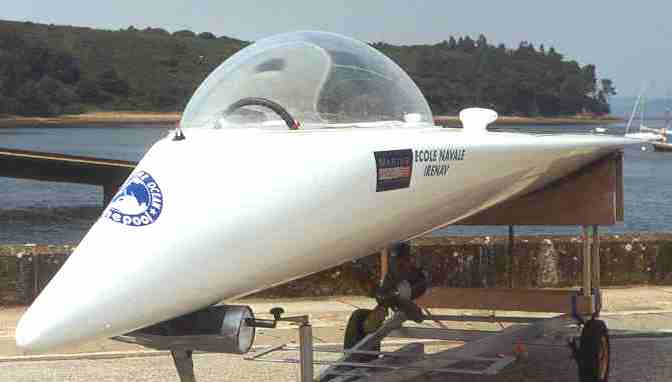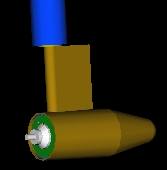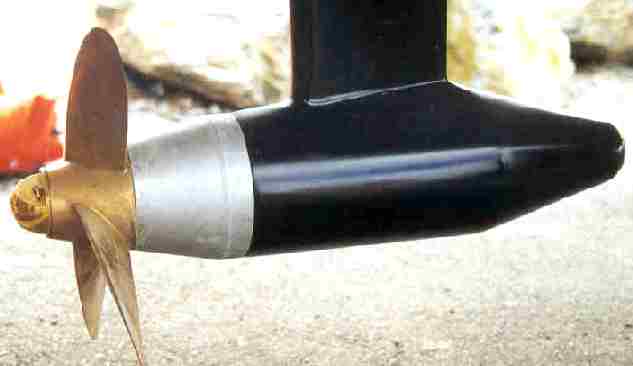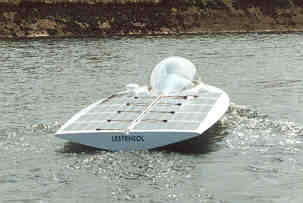|
In
English LESTHREOL means: LESTR : means
Vessel and HEOL : Sun - hence 'Sun Vessel'
The
LESTRHEOL project was initiated as a collaborative study
between two schools : l'Ecole
Navale et le lycée La croix rouge . The objective
of this project was the design of a small innovative
boat to be driven by solar energy. Students of the two
schools completed studies with the same specifications.

This
project was realised with an industrial partner : It's a
young company named "STELPA design et prototypage"
de Port-la-forêt (56) FRANCE. The initial project was
undertaken from November 1999 to july 2000.
The
manufacturing cost was minimized with help from civilian
and military partners.
Some
technological
choices have been made to obtain an innovative and
original product. Some photographies
can be seen.
The
"Grand
prix de l'Ecole navale"
is is a sailing regata organized by the french naval
academy, featuring the Lestrheol.

Specifications
General
- Solar-powered
boat
- 2-seater
- Velocity:
6 knots
- Displacement:
160 kg
- Size:
length: 6.47 m: width: 1.67 m: draught: 0.75 m
- Electric
battery autonomy: 3 hours
- Propulsion:
marine propeller
- Propeller
rotation rate: 500 rpm
- Ecological
and innovative nautical solar powered boat
- Minimum
weight of the hull
- Hull
shape: wave-breaking bow
- Airex-Carbon
composite for the hull shape
Energy
- 10
solar panels (Webasto): 500 W - 24 DC V
- weather-
sealed for use in marine environment - (21 kg)
- 2
Electric batteries: 12 DC V - 60 Ah (36 kg)
- Autonomy: 3 hours
- DC
motor power : 650 W - 24 DC V
- Voltage
regulator + variable speed controller
Propulsive
system
- Propulsion
by tractive pod and electric motoreducer
- Propeller
: Modified Wageningen blades, 4 blades, 400 mm
diameter
- Sheer
stress: 160 N (estimated) at 6 knots


Manoeuvrability
- With
orientable rudder only
- With
orientable pod only
- With
both orientable pod and rudder
Etudes des élèves de l'Ecole navale concernant
LESTRHEOL
- Design
of the propulsive system
- Design
of the manoeuvrability system
- Study
about the sheer stress
- Design
of the adapted propeller
- Design
of a special tow to take the boat on
- Study
of new motors for this boat
- Comparison
of manoeuvrability with orientable pod or not.

Important design choices
- Solar
pannels stick on the roof
- Motor
in a orientable pod
- Manoeuvrability
with orientable pod and rudder
- Tractive
propeller in front of the pod
- Wave-breaking
bow
- Airex-carbone
shape material

You
can have a look to :
Presentation at the SIMOUEST
workshop session poster
PDF
presentation (1,7 Mo - It needs a few minutes to
download)
Back
to french
version
Partners
- STELPA
Design & Prototypage (Paolo RISTA - Port-la-forêt
56): Manufacture of the shape
- Designe
and Manufacture team (SEF) of the IRENav
(Research institute of the Ecole Navale) :
Manufacture of mecanical system and pod.
- Atelier
électrotechnique (SEF) de l'IRENav (Institut
de Recherche Ecole Navale) : Câblage électrique
- Ecole
Polytechnique fédérale de Lausanne (CH) : Usinage
hélice
- Private
school La croix rouge de Brest (29) FRANCE :
Study of the motor and the control system
Solar boat links
Sites
sur les bateaux solaires en suisse - compétition et
contructeurs
View
of the annimation View
of a presentation of the project
CONTACT
at the Ecole navale:
Contact
: JP
Martineau
Ecole Navale - ENGEP
IRENav (Photo)
BP 600 Lanvéoc-Poulmic
29240 BREST NAVAL
FRANCE
Tél
: 02 98 23 40 20 Phone :
(33) 298 234 020
Fax : 02 98 23 38 57 TCP : (33)
298 233 857
martineau@ecole-navale.fr
CONTACT:
nelson@solarnavigator.net
07905 147709 (UK)
|